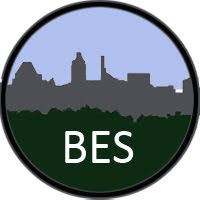A Change in the BES Community: A New Position for Peter Groffman
One of the founding members of BES, who has been at the Cary Institute since the project was in its formative phase, is pursuing a new career direction. Peter helped design BES, and serves as Deputy Director. He has been, and I am…
American Urban Ecology Comes of Age
The 100th Anniversary meeting of the Ecological Society of America was held in Baltimore this year. Some 4,600 members of the society gathered to share scientific insights, hold workshops on better connecting the science to the larger…
BES at the 100th Annual Meeting of the Ecological Society of America, in Baltimore
The Ecological Society of America is the world's largest organization of professional ecologists. Its members include not only research scientists at various career stages, from students, through postdoctoral associates, academic faculty,…
A Background Reading for the June 2015 Quarterly Project Meeting
Several of us have been working on an essay to describe more fully than an earlier post here, a theory of urban heterogeneity. That essay is not complete yet, but it is mature enough to share with the BES community for purposed of this…
The Science of Connection in a Disconnected Place
The news from Baltimore has been sad and disturbing over the past few weeks. Urban ecologists, like all ecologists, I think, love the places where they work. So I must remark on what is happening in Baltimore and what it means to…
The Evolution of Urban Heterogeneity Thinking
The heterogeneity of cities has been acknowledged as one of their most striking features for a very long time. Spatial heterogeneity characterized the ancient, cosmologically oriented cities of the Middle East, Asia, and the Americas (Lynch…


